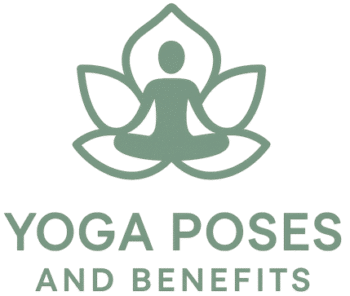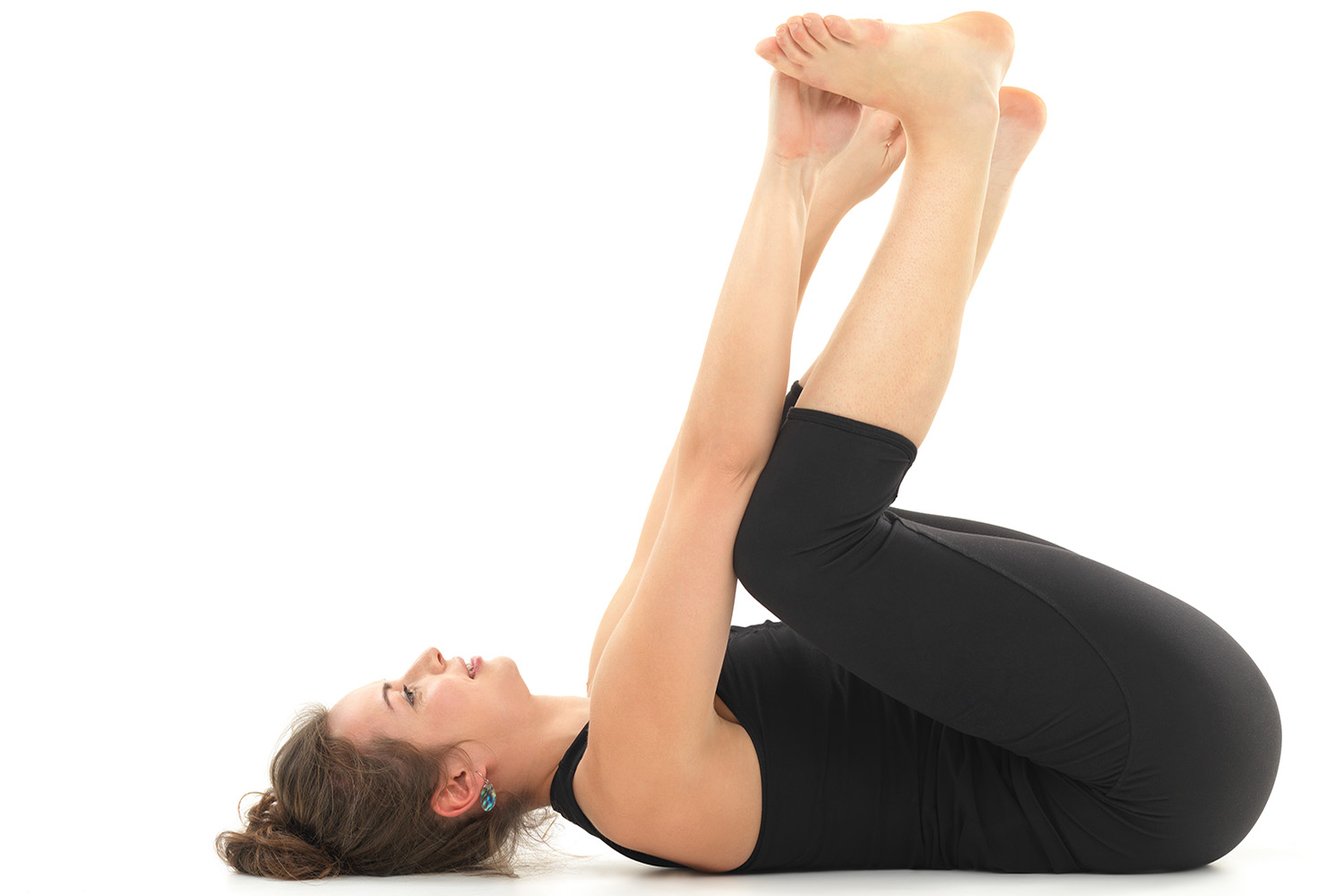Happy Baby pose in yoga, or Ananda Balasana in Sanskrit, is a delightful and playful posture that invites practitioners to reconnect with the carefree joy of childhood. This comprehensive guide will navigate through the nuances of Happy Baby pose, exploring its various aspects, from aliases and variations to modifications and benefits. Whether you’re a beginner yogi or an advanced practitioner, the Happy Baby pose promises a journey of relaxation, openness, and inner contentment.
Other Names for Happy Baby Yoga Pose
Happy Baby pose is recognized by several names across different traditions and cultures. Some alternative names for this pose include:
- Ananda Balasana (Sanskrit)
- Dead Bug Pose
- Blissful Baby Pose
How to do Happy Baby Pose in Yoga
Happy Baby pose can be easily practiced by following these simple steps:
- Start in a supine position: Lie on your back on your yoga mat.
- Bend your knees into the chest: Hug your knees toward your chest.
- Separate your knees: Open your knees wider than your torso.
- Flex your feet: Hold the outer edges of your feet with your hands, gripping the big toes if possible.
- Align your ankles over your knees: Ensure your shins are perpendicular to the floor.
- Gently pull down with your hands: Create a mild resistance by pulling down on your feet.
- Relax your shoulders: Soften your shoulders, keeping them in contact with the mat.
- Maintain the pose: Hold the Happy Baby pose for 30 seconds to a minute, breathing deeply.
Variations of Happy Baby Yoga Pose
While the classic form of Happy Baby is widely practiced, there are variations that add a creative flair to the pose:
- Extended Happy Baby Pose: Straighten one leg at a time while keeping the other knee bent, alternating between legs.
- Rocking Happy Baby: Gentle rocking side to side can enhance the stretch and soothe the lower back.
Modifications for Happy Baby Yoga Pose
To adapt Happy Baby pose to individual needs or limitations, consider the following modifications:
- Use a Strap: If reaching your feet is challenging, loop a yoga strap around each foot, holding onto the ends.
- Keep Knees Bent: Beginners or those with tight hips can keep their knees slightly bent, gradually working towards straightening them.
Contraindications for Happy Baby Pose in Yoga
While generally safe, Happy Baby pose may not be suitable for everyone. Exercise caution or avoid the pose if you have:
- Recent Knee or Hip Injury: Individuals with recent injuries to the knees or hips should approach this pose with care.
- Lower Back Issues: If you experience discomfort in the lower back, modify the pose or avoid it.
Tips to Improve Happy Baby Yoga Pose in Your Practice
- Focus on Breath: Deep, mindful breathing can enhance the relaxation and openness of the pose.
- Engage Core Muscles: Activate your core to stabilize your pelvis and protect your lower back.
- Explore Movement: Experiment with gentle rocking or swaying motions to discover what feels best for your body.
What Muscles Does Happy Baby Pose Work?
Happy Baby pose targets various muscle groups, including:
- Inner Thighs (Adductors): Stretched as the knees move towards the floor.
- Hamstrings: Engaged as the legs are gently pulled down.
- Groin Muscles: Activated with the opening of the hips.
- Lower Back: Supported and stretched, promoting flexibility.
Mental and Emotional Benefits of Happy Baby Pose in Yoga
Beyond its physical impact, Happy Baby pose offers mental and emotional advantages:
- Stress Relief: The gentle stretch and breath awareness can alleviate tension and stress.
- Childlike Playfulness: Embracing the pose’s playful nature can uplift the spirit and evoke joy.
- Hip Opening: Emotional tension is often stored in the hips; this pose provides an opportunity for release.
Is Happy Baby Yoga Pose Suitable for Beginners?
Happy Baby pose is beginner-friendly and can be adapted to individual levels of flexibility.
Is Happy Baby Yoga Pose Suitable for Advanced Practitioners?
Advanced practitioners can explore variations and deeper expressions of the pose, combining it with other hip-opening postures.
How Does Happy Baby Pose Contribute to a Yoga Sequence or Flow?
Happy Baby pose can be seamlessly integrated into a yoga sequence:
- Hip Opening Sequence: Include Happy Baby along with other hip-opening poses like Pigeon or Butterfly for a well-rounded practice.
- Restorative Flow: Use the pose during a restorative flow to release tension and invite relaxation.
- Cool Down: Incorporate Happy Baby as part of the cool-down sequence to prepare the body for Savasana.
How Can I Deepen My Practice in Happy Baby Pose?
Deepening your practice in Happy Baby pose involves:
- Regular Practice: Include Happy Baby in your routine to gradually improve flexibility and comfort in the pose.
- Mindful Exploration: Experiment with variations and explore subtle movements to understand your body’s preferences.
- Lengthen the Duration: Extend the time spent in Happy Baby gradually, allowing for a deeper release.
Common Mistakes in Teaching Happy Baby Yoga Pose
To ensure a safe and effective practice, avoid these common teaching mistakes when guiding students in Happy Baby pose:
- Overexertion: Encourage students to find a comfortable stretch and avoid excessive pulling on the feet.
- Neglecting Breath Awareness: Emphasize the importance of deep, rhythmic breathing to enhance the relaxation aspect of the pose.
- Ignoring Individual Differences: Remind students to honor their bodies’ limitations and use props or modifications as needed.
In conclusion, Happy Baby pose extends an invitation to rediscover the simplicity and joy inherent in our bodies. As you playfully explore this pose, let go of tension, breathe into the stretch, and embrace the blissful essence of the moment. Whether you’re a curious beginner or a seasoned practitioner, Happy Baby pose offers a space to reconnect with the carefree spirit within. So, lie back, open your heart, and surrender to the joyful embrace of Ananda Balasana.
Namaste.
Is happy baby good for the pelvic floor?
Yes, Happy Baby pose is beneficial for the pelvic floor. This yoga posture gently stretches the pelvic muscles, helping to release tension and improve flexibility. It also promotes relaxation of the sacrum and hips, supporting better alignment and function of the pelvic floor.
How to do a happy baby pose properly?
To do a happy baby pose properly, lie on your back, bend your knees toward your chest, and grip the outsides of your feet with your hands. Keep your ankles directly over your knees and gently pull down to open the hips. Maintain a flat spine and relax the shoulders. Common in yoga practices like Hatha and Vinyasa, this pose promotes hip flexibility and calms the mind.
What are common mistakes in happy baby pose?
Common mistakes in Happy Baby Pose (Ananda Balasana) include straining the neck, forcing the knees too close to the floor, and rounding the lower back off the mat. Using a yoga mat, practicing with mindfulness, and incorporating props like yoga straps can help maintain proper alignment and prevent injury.
When should you avoid Happy Baby Pose?
You should avoid Happy Baby Pose if you have a neck injury, knee issues, or are in the second or third trimester of pregnancy. This yoga pose, also known as Ananda Balasana, involves deep hip opening and spine flexion, which may aggravate conditions without proper support or guidance from a certified yoga instructor.
What is the best exercise to strengthen the pelvic floor?
The best exercise to strengthen the pelvic floor is the Kegel exercise, which involves repeatedly contracting and relaxing the pelvic muscles. Other effective movements include bridges and yoga poses like Happy Baby Pose. These exercises help improve bladder control, core stability, and pelvic alignment.

